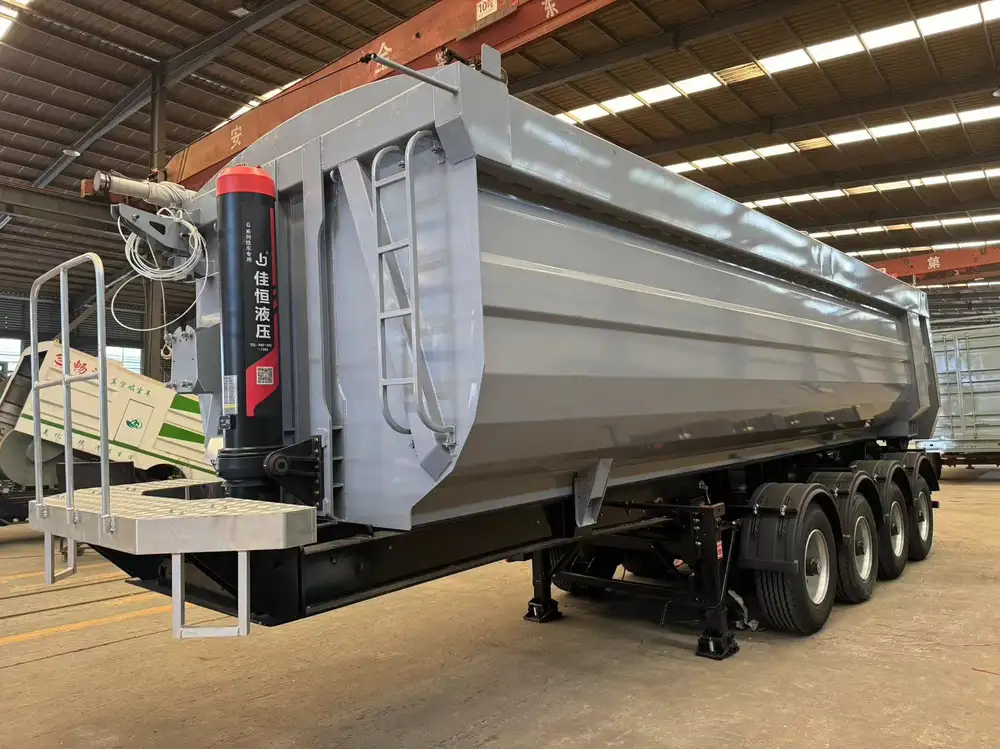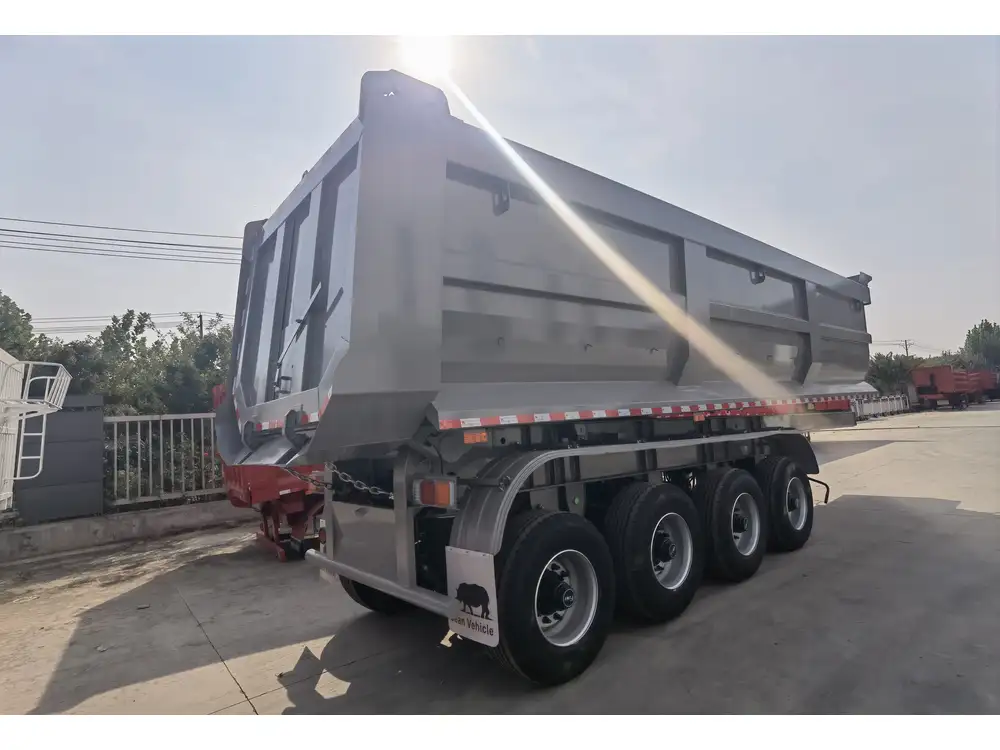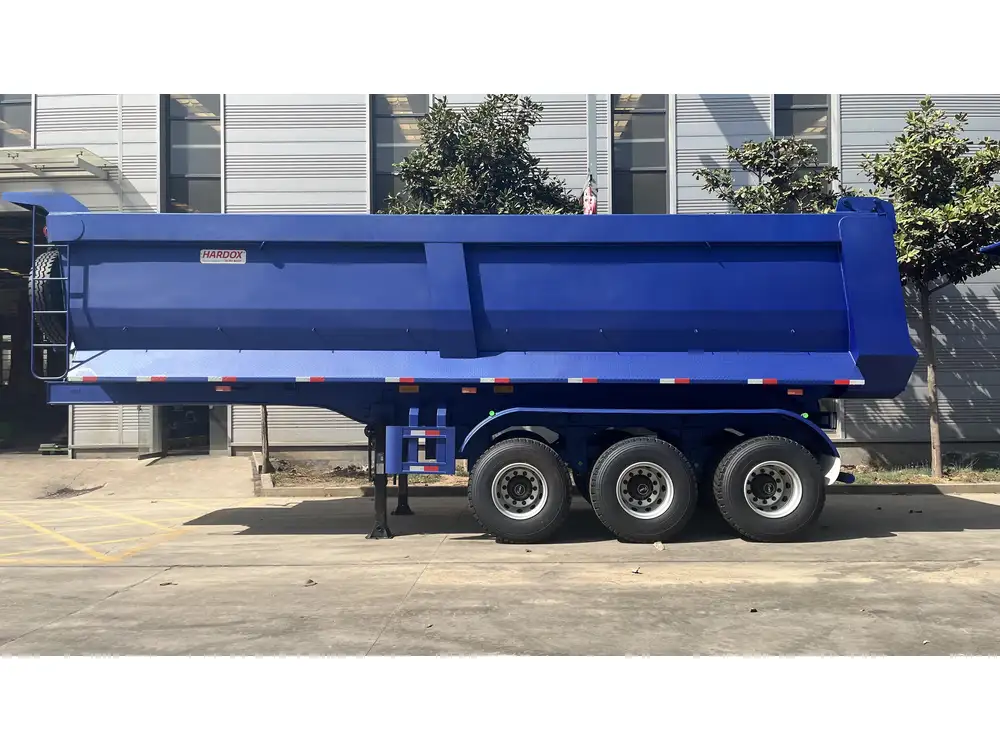When it comes to operating flatbed trailers, understanding legal size requirements is paramount for compliance, safety, and efficiency in transportation. This article dives deep into the complexities surrounding these regulations, ensuring manufacturers, operators, and users gain a thorough grounding in their obligations.
Size Dimensions: A Breakdown of Regulations
Maximum Width
Typically, the Federal Highway Administration (FHWA) regulates the maximum width of trailers. Generally, the standard width for a flatbed trailer is 8.5 feet (102 inches). However, in certain scenarios, oversize permits may be granted for loads exceeding this width, given they meet specific criteria and safety measures.
| Trailer Type | Maximum Width (inches) | Permit Requirements |
|---|---|---|
| Standard Flatbed | 102 | No special permit needed |
| Oversized Load | >102 | Requires special permitting and escort |

Maximum Length
The legal length for a flatbed trailer can vary by state, but the common maximum is 53 feet. This applies to the overall length of both the trailer and the truck cab. It is essential to understand individual state regulations, as some may permit longer configurations:
| Length Classification | Legal Limit (feet) | Notes |
|---|---|---|
| Standard Length | 48-53 | Common for most trailers |
| Special Permits | Up to 85 | For specialized operations |
Maximum Height
The Federal Height requirement is generally capped at 13.5 feet. Loads exceeding this height typically require special arrangements, including designated routes that facilitate taller vehicles.
| Height Class | Standard Limit (feet) | Specific Considerations |
|---|---|---|
| Standard Height | 13.5 | Must avoid certain underpasses |
| Oversized Height | >13.5 | Requires permits and route planning |
Weight Limits and Gross Vehicle Weight Rating (GVWR)
The Legal weight limit for trailers—including the cargo loaded onto them—is essential for safety and compliance. Most states adhere to a maximum gross vehicle weight rating (GVWR) of 80,000 pounds for trucks with trailers. Here’s how it breaks down:
| Weight Class | Standard Limit (pounds) | Common Usages |
|---|---|---|
| Single Axle | 20,000 | Smaller vehicles |
| Tandem Axle | 34,000 | Common for flatbeds |
| Total Weight Limit | 80,000 | Maximum for multi-axle |

State-Specific Regulations: Are You Aware?
Understanding that regulations can shift from state to state is vital. Therefore, it’s beneficial for operators and manufacturers to be informed about their particular state’s rules. For instance, states like California might have conditions leading to a slightly modified system of limits, where extra permits become imperative.
Key States to Monitor
| State | Noteworthy Regulations | Additional Notes |
|---|---|---|
| California | Specific routing needed for oversized loads | Restricts travel timings for large loads |
| Texas | Higher weight allowances but requires inspection | Seasonal restrictions during summer |
| Florida | Year-round restrictions on width exceeding 102 inches | Enforcement varies by region |
Implications of Non-Compliance: What Happens If You Fail to Comply?
The repercussions of ignoring size limitations can be severe, ranging from fines to legal repercussions. Non-compliance can result in:
- Fines: Depending on the severity and state, fines can vary significantly and may impact company profitability.
- Increased Liability: Should an oversized load cause an accident, the responsible party may face severe legal ramifications.
- Logistical Delays: Failure to comply can result in roadblocks or rerouting, causing delays and increased operational costs.
Moreover, it’s essential to realize that regular inspections and ensuring timely adherence to regulations can prevent these issues.

Preparing for a Flatbed Trailer Journey: Essential Considerations
Planning a journey with a flatbed trailer requires thorough preparation. It’s crucial to take into account various considerations to ensure compliance and safety:
Route Planning
- Identify Restrictions: Research routes ahead of time to avoid bridges with height limitations and check local regulations.
- Detours & Alternatives: Explore alternate routes, especially if carrying oversized loads.
Permits and Licensing
- Special Permitting: For loads exceeding standard dimensions, ensure you apply for and receive the appropriate permits in advance.
- Licensing Requirements: Ensure that operators possess the necessary commercial driver’s license (CDL) that may require special endorsements.

Tips for Enhancing Compliance and Security
Implementing best practices can significantly enhance your compliance with flatbed trailer regulations. Some essential tips include:
Regular Training Programs
Conduct regular training for operators to keep them informed about the latest federal and state regulations related to trailer dimensions.
Maintenance of Equipment
Frequent inspections of trailers can ensure that they are in optimal condition and adhere to the safety dimensions required by law. Attention to brakes, tires, and structural integrity is critical.

Routing Software
Investing in modern routing and logistics software can help identify compliant paths for oversized trailers, thus enhancing operational efficiency.
Engaging with Local Authorities
Regular communication with local transportation or road authorities can aid in determining any recent changes in regulations while establishing good working relationships for better compliance.
Case Study: An Example of Successful Compliance
To illustrate the importance of adhering to legal size requirements, let’s analyze a fictitious case of “XYZ Transport”.
Company Overview: XYZ Transport operates a fleet of flatbed trailers focusing on construction material transportation.

Initial Challenge
XYZ Transport faced a series of fines for exceeding legal limits while transporting building equipment. As a result, they lost significant revenue and faced operational disruptions.
Strategic Measures
- Assessment of Operations: Conducted a comprehensive analysis of their shipping processes and routes.
- Training: Implemented a structured training program for drivers focused on legal limits, route restrictions, and loading practices.
- Technology Integration: Integrated GPS and routing software to optimize paths for compliance.
Outcome
Post-strategic overhaul, XYZ Transport witnessed a 50% reduction in fines over six months. Their on-time delivery rates improved significantly along with enhanced client satisfaction, reinforcing the importance of adhering to legal guidelines.

Conclusion: Ensuring Compliance in Flatbed Trailer Operations
In conclusion, understanding the legal size requirements for flatbed trailers is more than just compliance—it’s about maximizing safety, efficiency, and profitability in transportation. With the regulatory landscape evolving, staying informed is not just beneficial—it’s essential.
By erecting a comprehensive structure of education, compliance checks, and leveraging technology, operators can navigate the complexities of trailer operations. From understanding maximum widths and lengths to adapting to state-specific regulations, mastering these dimensions can mitigate risks and propel business success in the transportation sector.
Quick Reference Checklist
- Max Width: 102 inches
- Max Length: 53 feet
- Max Height: 13.5 feet
- Max Weight: 80,000 pounds
Adhering to these guidelines ensures that operations run smoothly, avoiding unnecessary penalties and contributing to a safer road environment for all.



